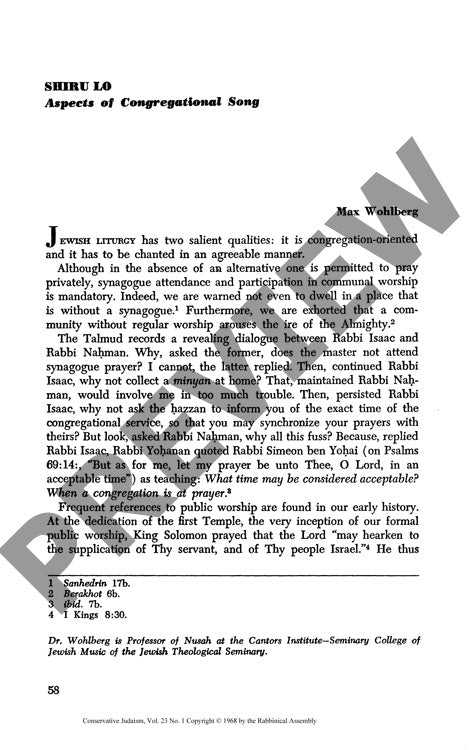Shiru Lo Aspects of Congregational Song
Couldn't load pickup availability
Jewish congregational singing, once a cornerstone of ancient worship that balanced communal participation with melodic beauty, faces a critical decline in traditional repertoire and practice. Through analysis of Talmudic sources, medieval commentaries, and modern musical compositions, Wohlberg reveals how migrations, declining Hebrew literacy, and the rise of professional choirs have eroded this essential tradition. The research examines ancient texts on synagogue practices, surveys 19th and 20th century liturgical works, and comparatively analyzes congregational melodies drawn from Yiddish folk music, Hasidic traditions, and Israeli songs. While the Conservative movement in America, particularly through composers like Israel Goldfarb and Louis Lewandowsky, has played a vital role in reviving Hebrew congregational singing, contemporary melodies often display disconnection from traditional nusah and proper textual meaning. Modern congregational songs draw from diverse musical sources but frequently lack liturgical dignity and textual congruence. The findings emphasize that effective congregational song requires careful attention to textual meaning, traditional nusah conformity, appropriate vocal range, and melodic accessibility. To address these challenges, the research recommends establishing a permanent committee to develop standards and compositions, thereby reinvigorating this vital yet neglected dimension of Jewish worship.

More Information
-
Physical Description
-
Publication Information
Published 1968
ISBN
-
Publication Credits
Max Wohlberg

